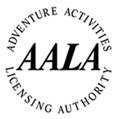1. Quiet Feet
Using easy climbs to begin with means you can focus on making each foot placement perfectly and this will set the standard for the rest of the session. Slow each placement down and pause over the hold for a split second while you decide on the best positioning. Place the foot silently, without scuffing the wall above the foothold and try not to re-adjust your feet excessively. Work on doing this more quickly and it should become more natural as the warm-up progresses.
2. Rhythm and Momentum
Climbing should have a natural rhythm that uses momentum. The best rhythm for effective movement is often step, step, reach, reach, since it allows the legs to direct and drive the movement. There are obviously many other rhythms, and every unique sequence possesses a best rhythm of movement for gaining a momentum to help propel successive moves. Consider how you use momentum in moving across monkey bars, with each movement blending into the next in a continuous drive. Use these smooth, continuous motions when climbing through strenuous sequences.
3. Relax and Climb with Smooth Moves
Smooth, fluid movement is what you need to be doing for best technique, to preserve energy and to avoid risk of injury. Stiff, mechanical movement is a sign of poor technique and a high burn- rate of energy. One of the best ways to climb in a smooth and efficient movement is learning to use only the muscles necessary for engaging and directing movement; the muscles of your forearms, shoulders, abdomen, thighs, and calves. The easiest way to achieve this is to teach yourself to occasionally switch your focus to the muscles you don’t necessarily need to use; upper arms, hips, torso, neck and face, and work out if there is any unnecessary tension that is making the muscles work harder and burn more energy than necessary. To relieve tension, take a few slow, deep belly breaths.
4. Optimize Your Climbing Pace
As your route gains in steepness and difficulty, pace becomes another aspect of climbing that is important. While an easy climb with large holds allows you to ascend at a leisurely pace, a more challenging sequence or overhang will demand that you kick into high gear to overcome the difficulty. When climbing near your limit, it must be your intention to move as energetically as possible without any drop-off in technique, for example skidding feet. Reduce the pace at the first sign that your technique is suffering. As you practice climbing different routes at different paces, you’ll develop the ability to realise the right pace for a certain route.
5. Ensure Steady Breathing
A steady flow of oxygen to your muscles is important for energy production and recovery. The slow, deep, steady belly breaths are the best for this. However many climbers tend to fall into shallow, rapid breathing as movement becomes more strenuous on harder climbs. Often you will also find yourself unknowingly holding your breath at times of high stress. These are two tendencies that you must be aware of and proactively counteract if you are to climb at your best.
Before every climb, take several slow, deep breaths. As you start climbing, aim to maintain the same slow, steady breathing that you first initiated. It is important that you use every rest position as an opportunity to reset your breathing with a few slow, deep belly breaths. Doing this frequently will ensure that you maintain your energy levels for longer.







